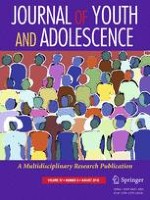02-05-2018 | Empirical Research
Parental Support and Youth Occupational Attainment: Help or Hindrance?
Gepubliceerd in: Journal of Youth and Adolescence | Uitgave 8/2018
Log in om toegang te krijgenAbstract
Although several concerns surround the transition to adulthood and youth increasingly rely on parental support, our knowledge about the implications of parental support for youth development and transition to adulthood is limited. This study fills this gap by conceptualizing development within a life course perspective that links social inequality and early life course transitions. It draws on a subsample of youth observed between age 18 and 28 from the Transition to Adulthood supplement of the Panel Study of Income Dynamics 2005–2015 (N = 7,542; 53% female, 51.3% white). Mixed-effects models reveal that the more direct financial transfers youth receive, the higher their occupational status. Yet, indirect financial support parents offer through co-residence shows the opposite pattern. Among youth receiving monetary transfers, college graduates have particularly high occupational status; however, among youth living with their parents, college graduates have the lowest occupational status. Although different types of parental support may equally act as safety nets, their divergent implications for youths’ occupational attainment raise concerns about the reproduction and possible intensification of inequality during this developmental stage.
